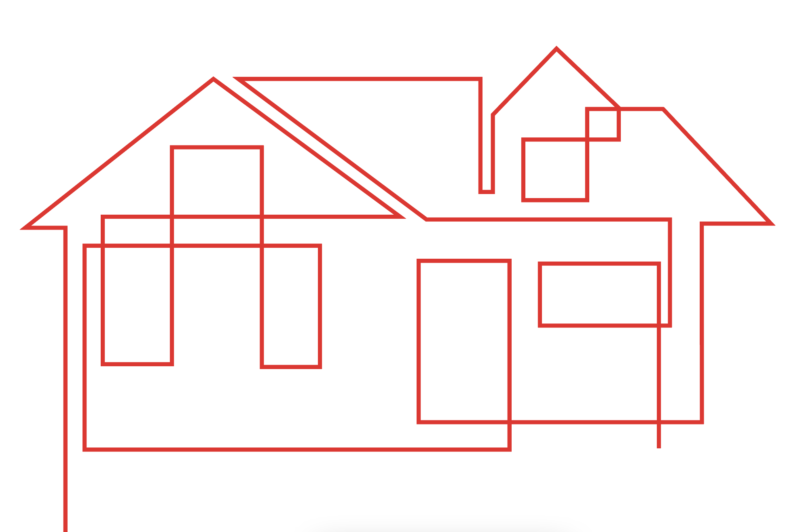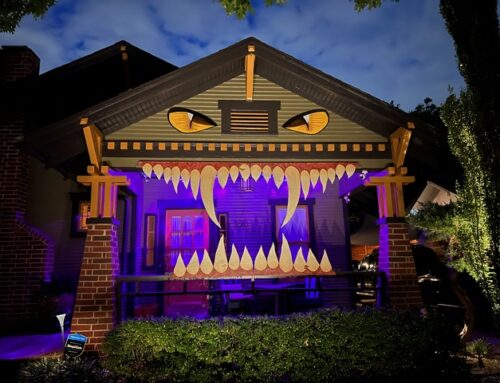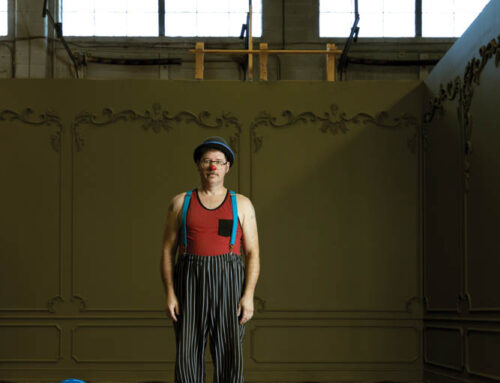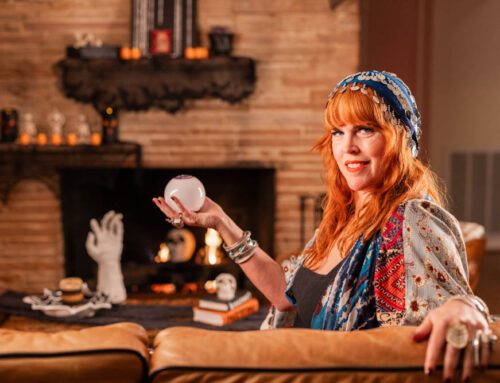Lifelong Oak Cliff residents Christopher and Lauren Lewis paid about $250,000 for their Glen Oaks home in 2018. Four years later, homes in the area were selling for about $450,000 — some as high as $500,000.
Glen Oaks was settled in the post-World War II period by white families, says Christopher Lewis, a Skyline High School alumnus. They gradually moved out of the area, and Glen Oaks became a predominantly Black neighborhood. But that’s changing.
“Certain groups are being priced out, and I think that’s leading to the change in the areas,” says Lauren Lewis, who attended Bishop Dunne Catholic School.
In Glen Oaks, families who can afford higher prices are starting to move in, the Lewises say. At the same time, longtime homeowners are leaving. House flippers with no connection to the neighborhood contribute to change.
“You lose that camaraderie, that neighborly engagement,” Christopher Lewis says.
The look of Oak Cliff neighborhoods is changing, the Lewises say.
Custom-built traditional and contemporary homes made to be unique are being replaced with rustic ranch-style homes. Brick is being painted white or gray. The homes popping up look standardized, like in the suburbs, Lauren says.
Gentrification began hitting Oak Cliff over 20 years ago as wealthier people moved into historically poor neighborhoods. Now home values in our neighborhood are higher than ever, with cold consideration for neighborhoods that have been unfairly treated by redlining and financial disenfranchisement for nearly a century.
What’s happening in Glen Oaks and throughout Oak Cliff is gentrification — a kind of displacement where wealthier people gradually move into historically poorer neighborhoods, pushing out established residents who can no longer afford high property taxes or their rent.
Along with that, gentrification can make neighborhoods feel safer. And newcomers may advocate for street improvements and bring in businesses.
In some cases, gentrified areas are the same places where redlining occurred.
Redlining dates back to the 1930s, when the federal government began insuring mortgages as part of New Deal programs to prevent foreclosures following the Great Depression.
Properties were appraised and potential buyers vetted based on federal guidelines. Color-coded maps showed which properties in more than 200 cities across the country were worthy of being granted loans.
The Federal Housing Authority ranked neighborhoods by risk. Those marked with “D” and lined in red were considered “hazardous,” unworthy of receiving loans. Many of these areas — such as the Tenth Street Historic District — were also predominantly Black neighborhoods.
The “best” neighborhoods were given “A” ratings.
Barriers such as highways, hills and parks could prevent the “adverse influences” of business and industrial facilities, as well as “lower-class occupancy and inharmonious racial groups” from entering an area, according to the Federal Housing Administration’s Underwriting Manual, which was in effect in 1938. In other words, some physical barrier should separate white neighborhoods from minority neighborhoods, wealthy neighborhoods from poor ones; otherwise, the rating of a location would be lowered, making a mortgage riskier.
The manual explicitly directed underwriters to examine the surrounding areas of a location to see whether “incompatible racial and social groups” are there. To maintain “stability” and property values, according to the manual, neighborhoods had to stay segregated.
Borrowers themselves were also rated.
The manual laid out instructions for underwriters at the administration when evaluating how risky a mortgage was, and thereby which loans should be insured.
Say someone wanted to buy a home in a low-income or minority neighborhood. According to the manual, those neighbors would, over time, cause the buyer to lose interest in the property. So that buyer should be given a lower rating.
No mortgages meant no homeownership. So while white and wealthy families purchased properties 80 years ago, creating generational wealth, many minority populations were robbed of that opportunity.
In 1977, to begin to rectify decades of discriminatory lending, the U.S. government passed the Community Reinvestment Act. It requires banks to create assessment area maps to show where they do business. Among its stipulations is that assessment areas can’t exclude low- or moderate-income communities.
The act intended to end redlining. But a 2020 investigation by WFAA found that 20% of the banks in Dallas County omit from their assessment areas all or parts of Southern Dallas, the area below Interstate 30.
Even 10-15 years ago, it was difficult to get a loan in the Bishop Arts District, says James McGee, the president of Southern Dallas Progress Community Development Corporation.
“Gentrification wouldn’t be possible if we didn’t have areas that are underinvested in by City government and by the banks,” McGee says. “The underinvestment leads to high crime, lower property values.”
McGee is a former compliance manager who helped banks follow Community Reinvestment Act regulations. The nonprofit he represents focuses on small-business development, financial education and housing in Southern Dallas. They have been trying to convince the City to implement a displacement policy and look more into inclusionary zoning — which would disperse low-income housing options throughout the city, rather than concentrating it in a handful of places, like Oak Cliff.
The development corporation has also been working with Legal Aid of NorthWest Texas to file complaints with the Department of Housing and Urban Development, encouraging regulators to hold banks accountable.
James Armstrong, the president and CEO of Builders of Hope Community Development Corporation, says redlining created pockets of diverse neighborhoods that are now placed at risk by private and public investors, who see the areas as “prime property.”
“It’s a classic case of, how do we secure and preserve existing homeowners while developing and redeveloping — or some would call revitalizing — a neighborhood to improve the quality of life,” Armstrong says.
His organization is a nonprofit that helps address the needs of communities and develops affordable housing focusing its efforts mostly in West Dallas, Oak Cliff and Pleasant Grove.
They are working to develop an anti-displacement toolkit to help the City of Dallas address gentrification.
Before any housing developments begin, Builders of Hope assesses what neighborhoods need. They also finance developments through subsidies and grants from local partners, which means homeowners have tens of thousands of dollars of equity in their home from the beginning, Armstrong says. Sale prices for Builders of Hope developments are 30%-40% below market value.
Ordinances and regulations are already available to help neighborhoods prevent gentrification and preserve affordability, but many residents aren’t aware of them, says Christopher Lewis, a former Dallas City Plan Commission member and current member of the Dallas Housing Finance Corporation.
“If residents’ priorities and resident voices and neighborhood self-determination are not prioritized above developers’ desires, we will always see these neighborhoods that make up the fabric and the identity of our city be run over with private investment,” Armstrong says. “We have to bring equity to that in order to fix the inequities of the past and to build strong, thriving communities in the future.”
Editor’s Note (Oct. 13): A previous version of this story stated white and Asian families are moving into Glen Oaks. The new change identifies the incomers as families who can afford more expensive real estate.






